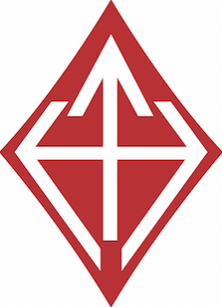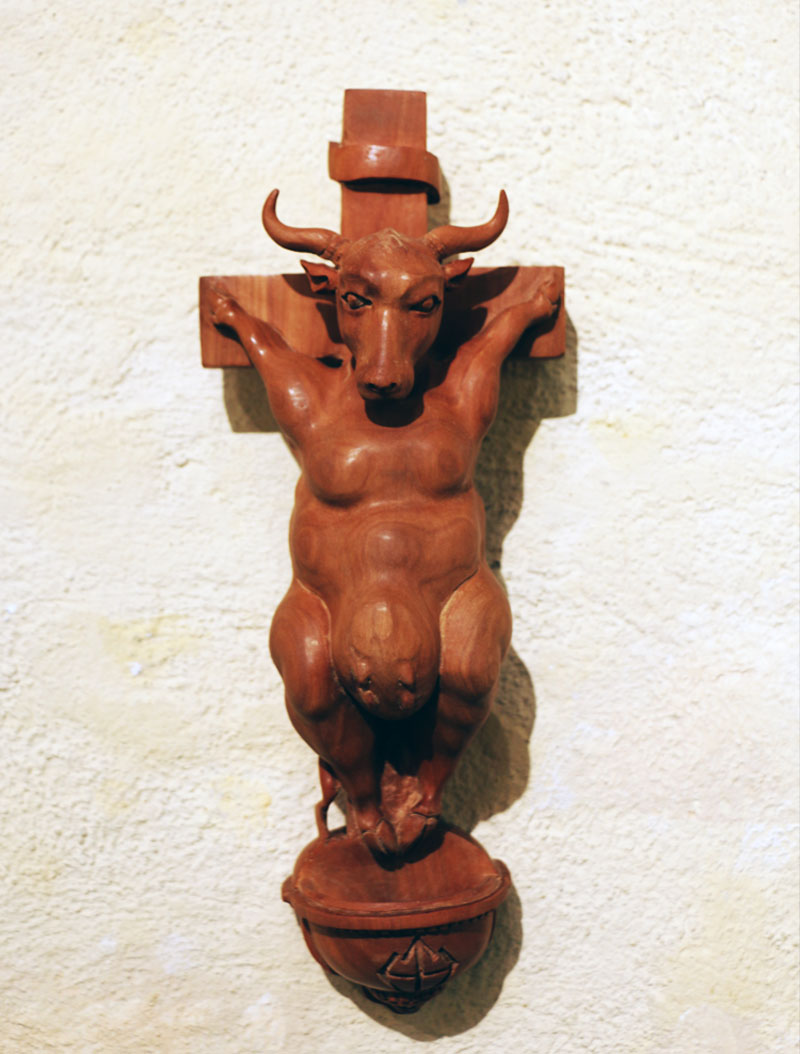MISSING (2017)
In Missing (2017) Tom Herck plays with the the nostalgia evoked by vintage items like the milk cartons from our school days. Before Facebook and Amber Alerts the grainy images of missing boys and girls ‘sat’ beside Americans at breakfast time during the 1980s. Though successful the campaign sourly ended because it was ‘frightening the children’. In Missing the portrait is replaced by a mirror confronting the visitors with their lacking ‘spiritual self’. This installation as part of the Holy Cow project is about the abandonment of the Church. On the side of the cardboard box we find the Holy Cow portrait logo and ‘fresh 2% fat milk’. The Gothic 'Herck ' script on the other side of the box is related to the location of the installation: a Medieval chapel.
The greasy rotting milk carton in the installation visualises how the image of the church as well as the dairy industry has ‘turned bad’. As the Limburg locals say ‘The fat has gone off’(the best is part is gone). From costly sex-abuse payouts to a growing shortage of priests, the Church is facing enormous challenges. The percentage of Catholics who attend mass at least once a week has dropped steeply. Only six percent of the Flemish population go to church every week. The number of permanent churchgoers has halved in ten years. 45 Percent only go to church for family or social obligations.
On the right side of the installation we find a map of Limburg reminiscent of the conventional school maps. A coat of arms with deer and swan is flanked by the Holy Cow (replacing the lion of Limburg in the centre). The map consists of a patchwork motif stitched from cow’s skin. Every patchwork part indicating the percentage of cows per municipality by its colour. Whereas on the traditional school maps, the church symbols indicate the number of churches per municipality (with St Truiden as a clear winner), Herck merges this map with the ‘slaughterhouse map’ indicating how to cut the animal’s body parts. The Holy Cow milk font is made out of one piece of wood and should be filled with milk replacing the holy-water.
Through his Holy Cow series, the artist examines why cows are important for him. Perhaps the attraction lies in the apparently impotent power of the giant beast that has become so easy to tame and manipulate. Or perhaps Tom enjoys showing us the every day in a new and personal light. Cows and humans have shared a special relationship for thousands of years, co-existing to provide milk and meat for human survival. As a spiritual animal, the cow is said to symbolise trust and positivity. Cattle are considered sacred in many world religions.
The contrast with our current society, where the cow takes a much less sacred and mutual relationship is harsh. For many westerners, cows are viewed as lazy, idle and commonplace. Animal agriculture has an enormous ecological footprint. Factory farming gets a lot of criticism for its cruelty, the danger it poses to public health through the overuse of hormones and antibiotics and the pollution caused to air and water.
Tom Herck’s Holy Cow series makes an icon of the cow. Depending on the viewer it could be a sacred, or simply a commonplace beast. Herck alienates his audience by removing the cow symbols and school props from their familiar context, placing them in a Medieval chapel. The surreal displacement of the ethereal objects in Missing echoes how people in the Western society have lost a sense of the traditional dairy industry just like they are out of sync with the church
Missing
2017
Wood, acrylic paint and mirror.
270 x 180 cm
Missing
2017
Wood, acrylic paint and mirror.
270 x 180 cm
Missing
2017
Wood, acrylic paint and mirror.
270 x 180 cm
Map Limburg
2017
Wood, acrylic paint, cow skin, canvas.
200 x 200 cm
Map Limburg
2017
Wood, acrylic paint, cow skin, canvas.
200 x 200 cm
Map Limburg
2017
Wood, acrylic paint, cow skin, canvas.
200 x 200 cm
Map Limburg
2017
Wood, acrylic paint, cow skin, canvas.
200 x 200 cm
Holy cow milk font
2017
Wood
20 x 8 cm
Even though Tom Herck never criticized the phenomenon ‘church’ in itself, the installation was recently damaged by arson. Eventually the artist was forced to remove the installation after being exhibited for only 2 weeks when the 13th century door as well as a part of the installation caught fire. This incident occurred at 6 in the morning, when the perpetrators threw accelerators and petrol at the door to boycott the exhibition. The electricity from the chapel was damaged and the door was barricaded after the fire department and the police advised to close down the exhibition. In the meantime the water damage also aggravated. The chapel suffered serious smoke damage also affecting the installation. If the fire brigade would not have arrived on time, the chapel and its authentic wooden roof would most likely have set ablaze.
© Text by Lara van Oudenaarde.
© Pictures by Tom Herck.









